From perp walking De Niro to learning to dance, Oklahomans talk about being movie extras
For five months in 2021, Martin Scorsese ushered a dazzling array of stars into Osage County to work on his fact-based film "Killers of the Flower Moon."
Academy Award winners Leonardo DiCaprio and Robert De Niro and acclaimed Native American actress Lily Gladstone (who is NiMíiPuu, or Nez Perce, and Siksikaitsitapi, or Blackfeet) take the lead in the $200 million epic. Oscar winner Brendan Fraser and nominees Jesse Plemons and John Lithgow play supporting roles, and musicians like Jason Isbell, Sturgill Simpson, Jack White, Pete Yorn and Charlie Musselwhite inhabit smaller roles or make cameos.
But to bring the 1920s Osage County of the real-life story to life, the legendary director and his team populated the film with hundreds of real-life Oklahomans — including dozens of Osage Nation members and other Native Americans — working as extras and background performers. Over the 99 days of filming, the production created 1,200 roles for individuals as background talent, according to the Oklahoma Film + Music Office.
As "Killers of the Flower Moon" opened in theaters Oct. 20 to rave reviews and an “A-” CinemaScore from audiences, many Oklahomans eagerly watched for glimpses of themselves, their friends or family members in the 3 1/2-hour movie and its credits.
Three Oklahomans who were extras on "Killers of the Flower Moon" shared their stories of dressing in 1920s clothing, staying up all night to film scenes and "perp walking" De Niro on the biggest movie ever made in the Sooner State:
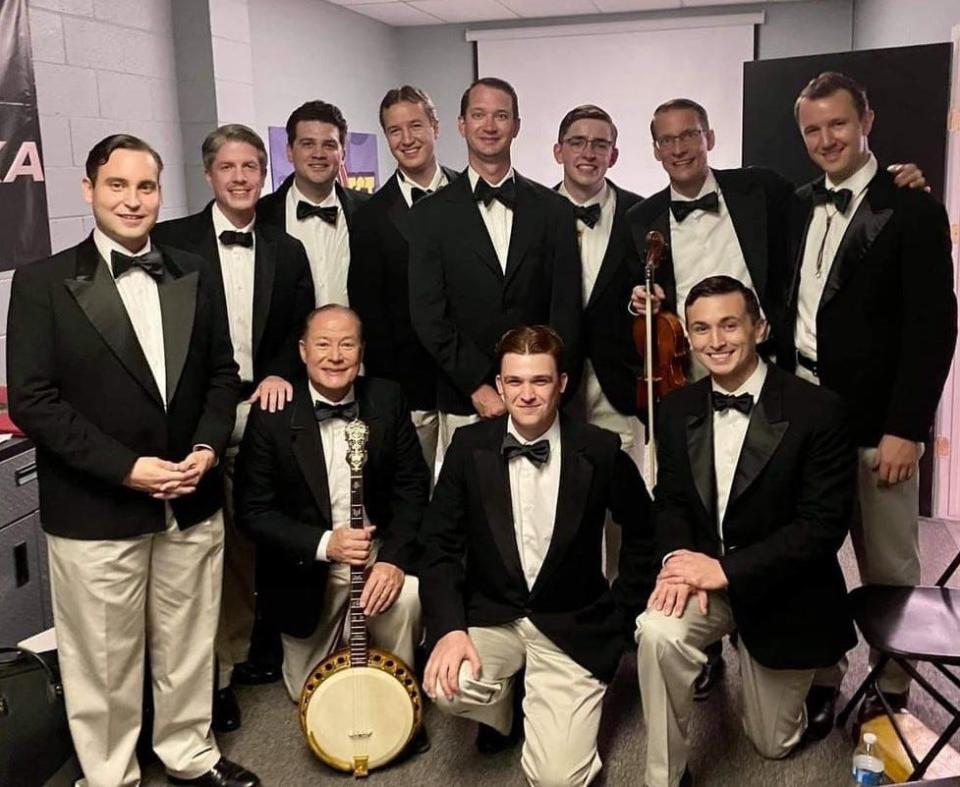
Fiddler Kyle Dillingham joins the band for a street party scene
Oklahoma fiddler Kyle Dillingham has played the Grand Ole Opry, toured in more than 30 countries and shared the stage with the likes of Roy Clark, Hank Thompson and the Oak Ridge Boys.
But he had never appeared in a movie before he was asked to play a violinist in a Dixieland jazz band for "Killers of the Flower Moon."
"That film obviously had the attention of everybody, and as a performer, I was looking to see, 'What are the scenes that involve music?' ... I actually submitted for a couple scenes," he recalled.
"And I heard nothing from both. It was just crickets all the way around, and I went on about my business and thought, 'Oh, well, it's still very cool for the state of Oklahoma.'"
Months later, he got a call from Johnny Baier, executive director of Oklahoma City's American Banjo Museum, who wanted to know what Dillingham was doing the following week. A skilled musician, Baier had been tasked with forming a band for one of the scenes Dillingham had applied for, and he was assembling top-notch performers to play 1920s jazz for a street dance sequence.
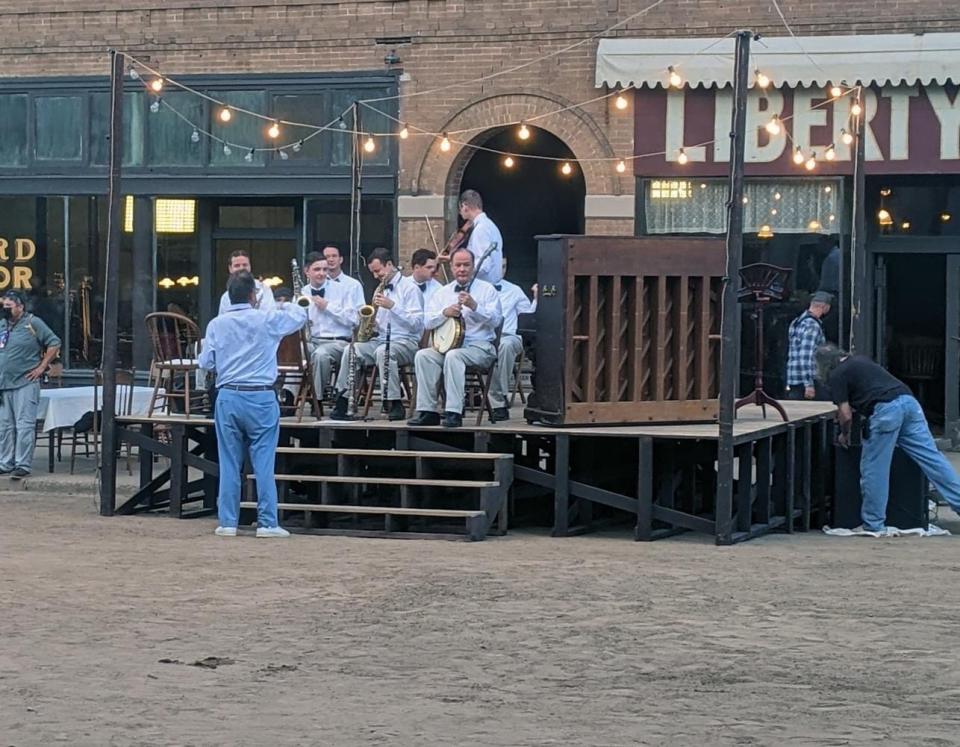
"He said, initially, they had cast ... actors pretending to be a band, and at the last minute, they just basically said, 'This is ridiculous. ... We need a real band that can legitimately play note for note, even though we won't use their sound,' since it's a pre-recorded track," Dillingham said, adding that appearing in the movie was a four-day commitment.
"So, he brought in musicians from all over the country."
Baier, Dillingham and their cohorts were tasked with emulating the famed 1920s jazz band The California Ramblers. The musicians traveled to Bartlesville to get their costumes fitted and hair styled for the period film. For the OKC fiddler, that included having his then-shaggy locks shorn to a short cut of the era.
"When they just started cutting, they said, 'This is great. This would be really good for beards over in hair and makeup," he recalled.
"Once we got all trimmed up and ready to go that evening, we had a rehearsal with the music director for the film, which was exciting. You're realizing that every single person that is involved in this is like the No. 1 guy in the industry, and so it was just great having those interactions."
When they arrived in Pawhuska, they were taken to a holding area to await filming on the night scene.
"We started calling tunes and just jamming. It really was one of the best bands I've ever been a part of," Dillingham said.
Filmed over two consecutive nights, he said the street party scene included about 250 extras, 50 dancers and several cast members, particularly DiCaprio and De Niro, whose characters have a key confrontation with the dance as a backdrop.
"So, we were on set, ready to go backstage around 7, shooting around maybe 8 or 9, and then really going until almost 4 or 5 in the morning," Dillingham said. "I remember talking with some of the guys backstage that were working the film, and they were like, 'So, this is your first picture? ... Well, enjoy. It's downhill from here. This is as big as it gets.'"
Although the band only appears briefly in one of the trailers and the final film, each musician is listed by name in the credits. Plus, Dillingham got to put "Killers of the Flower Moon" on his own cinematic credits — and he has since added to those by composing his first film score, for OKC writer-director Al Mertens' Oklahoma-made independent movie "Thank You, Amelia Earhart."
"What an excitement, what a thrill, all at the same moment, it's the exposition of a rather tragic and sad part of our history. But it's also a spotlight on the state in a way that's really never occurred before at this level," Dillingham said.
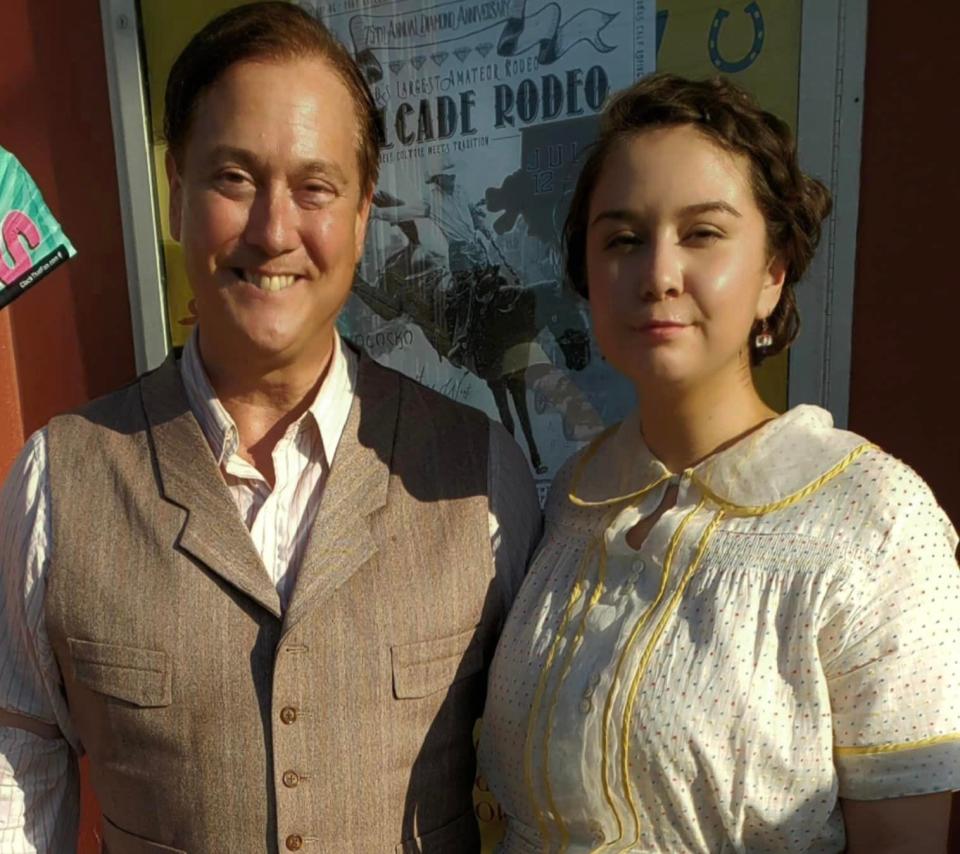
Osage dancer Russ Tallchief does the Charleston with his daughter for the movie's street party
While Dillingham and his bandmates were making music for the street party, Oklahoma-based Osage writer and performer Russ Tallchief and his daughter, Wanbli Tallchief, were among the dancers working on the scene.
"We were invited to come and participate ... and of all the things to do in the film, to be able to dance was really special to the both of us, because we come from a family of dancers," said Tallchief, who is a nephew of famed Osage ballerinas Maria and Marjorie Tallchief.
The father-and-daughter dancers spent two days in Bartlesville learning and practicing the Charleston, then two nights filming the party scene.
"We were in a big group of people that were all learning Charleston steps, and so we were all practicing together. So, we got to meet some new friends, and we got to see some old friends that were also part of the dancing. So, it was a really fun community gathering," said Tallchief, who divides his time between OKC and the Osage Nation capital of Pawhuska.
"We danced for hours and had a ball. ... There were actual dancers that were in the group, and then there were people that had never danced before. We were all learning at different levels, so we got to have fun laughing at ourselves as we stumbled through the dances."
He was surprised to learn how physical dancing the Charleston could be.

"The Charleston is more complicated than it actually appears: There are steps, there are moves, it can be acrobatic, it can really be just about anything that you want it to be, all with this swing groove going that keeps you anchored — and you just keep coming back to the swing part," he said.
"The band was phenomenal ... and I felt completely transported back to the 1920s. I think that that's a great compliment to the film production."
For the scene, the partygoers got to dance on the section of Kihekah Avenue that the film crew covered with dirt to transform downtown Pawhuska into 1920s Fairfax for the movie.
"It was in the wee hours of the morning when we got wrapped, so, of course, some of that time is waiting. So, we hung out on set and got to watch ... the behind-the-scenes people at work. And it was fascinating: Every minute of it was absolutely thrilling to be on set to watch a major Hollywood movie being made," Tallchief said, adding that he had been on the set of smaller indie films before but not a big studio movie.
"It's like a city of people, and everyone is working towards this common goal of telling the story, which is what makes it really magical, because everyone there is working for a common good."
Tallchief said he and his daughter also performed a traditional Osage dance with dozens of other members of the tribe for a particularly meaningful scene, especially given the movie's subject matter. "Killers of the Flower Moon" is based on the true story of the "Reign of Terror," the serial slayings in the 1920s of oil-wealthy Osage Nation citizens on their Oklahoma reservation.
"Literally, just about everyone in the community was involved in making the film in some way. ... I think everyone was aware of the gravitas of the story that we were telling, whether it was a party scene or a darker scene," Tallchief said.
"Every scene came with that same sense of purpose and commitment to sensitivity and telling the story with the most integrity that is possible through a film — and that was palpable on set."
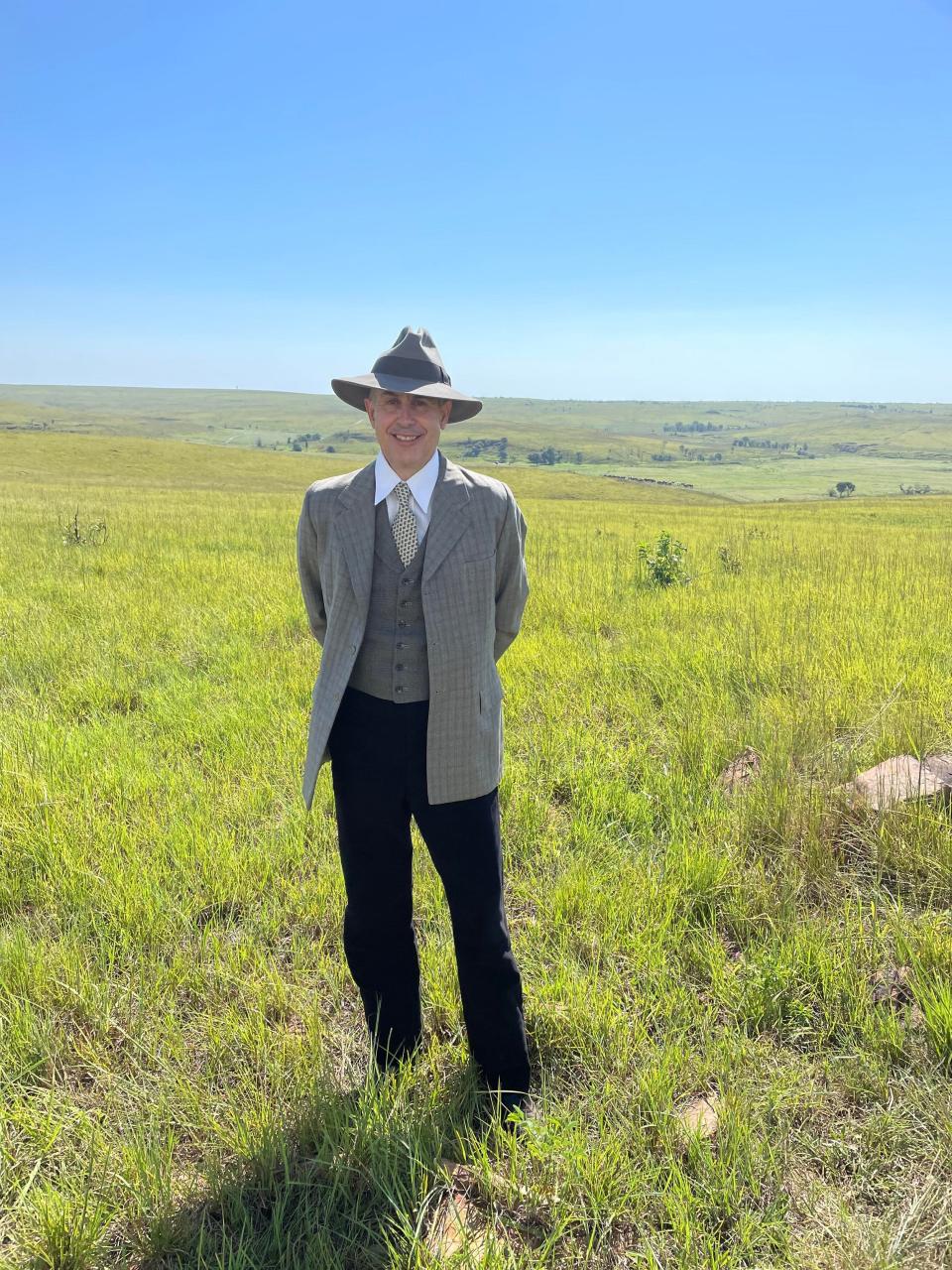
OKC composer Edward Knight reluctantly picks up a badge as a U.S. marshal
OKC resident Edward Knight appears in "Killers of the Flower Moon" as a concerned citizen in a pivotal late-film scene involving Fraser as a lawyer trying to convince DiCaprio's Ernest Burkhart not to testify against his villainous uncle, De Niro's William K. Hale.
But that background role came only after Knight, who is the composer-in-residence and director of music composition at Oklahoma City University, reluctantly took up a badge as a U.S. marshal for the film.
He said his cinematic experience began when he was visiting his son, Alexander Knight, who was then living in Austin, Texas, while working in the film industry. Knight's wife, OKC photographer M.J. Alexander, texted them one summer day in 2021 that "Killers of the Flower Moon" was searching on short notice for white men ages 25 to 60 to play local policemen and prison guards.
"I did not want to do it. But Alexander did. Finally, I was browbeaten into the fact that I'm going to submit," Knight admitted with a wry smile. "I took the worst picture I could take — I was just in my workout clothes; it was horrible. ... But guess who got chosen (and) who didn't?"
His journey to the silver screen started as a bumpy ride: While driving to Bartlesville to get outfitted in period clothes, Knight said his car broke down, and they had to wait hours for a tow truck, delaying his appointment with his cinematic fate by a day.
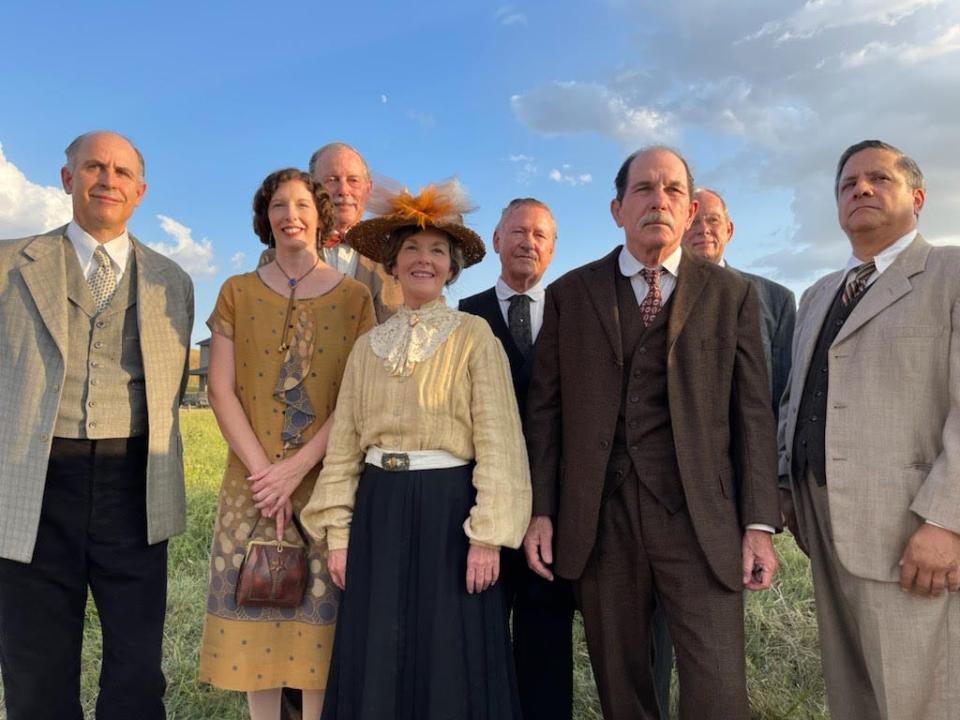
"You called them to say, 'I can't make it,' and they said, 'Can you make it tomorrow?' And I said, 'Say, yes,'" his wife recalled with a grin.
When he finally arrived to be fitted for his costume, Knight was told he looked like he should be playing a U.S. marshal instead of a local cop.
"I said, 'What's the difference?' And they looked at me and were like, 'There's a huge difference. U.S. marshals are actually important in this film, and the police are not,'" he recalled.
So, the reluctant extra ended up in Tulsa, where he escorted De Niro's sinister character in a "perp walk" up the courthouse steps.
"We spent an entire day shooting that over and over," Knight said. "We alternated between that and going to the back of the courthouse, where they were bringing Leonardo DiCaprio down the steps and putting him in the car. There were probably a hundred or 200 extras ... and I had to clear out the extras playing the townsfolk and the reporters."
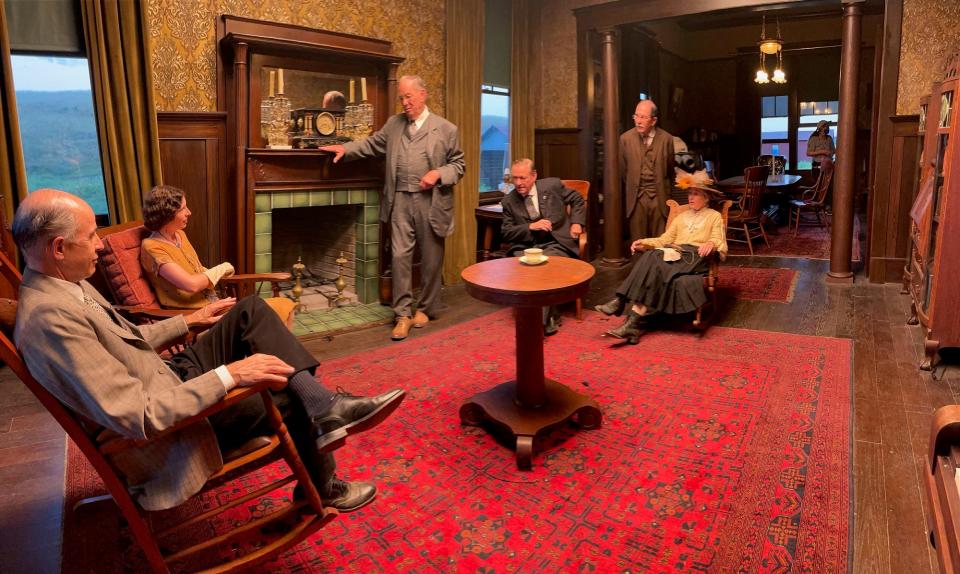
A couple of weeks later, he was called back to play the concerned community member at the confrontation at Hale's ranch house. Those scenes, rather than his "important" screentime as a U.S. marshal, ended up making the final film.
"It all turned into something totally different than I expected," he said with a chuckle.
This article originally appeared on Oklahoman: Oklahomans talk about being 'Killers of the Flower Moon' extras
